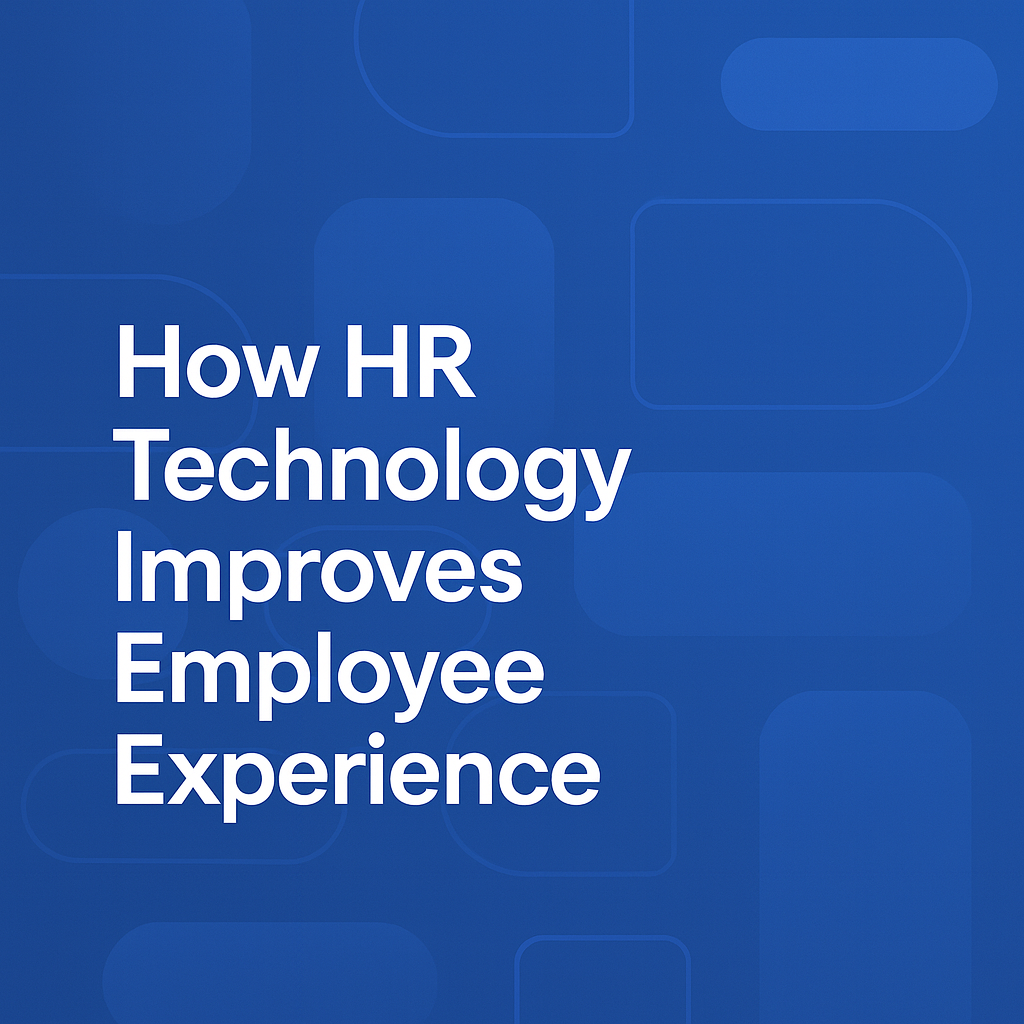Why 2025 Is the Year of HR Automation
Learn why 2025 will mark a turning point for HR automation — from AI and scheduling to data-driven decision-making — and how your HR team can



Introduction: The Shift That’s Already Underway
For years, HR automation has been “the future of work.” But that future has quietly arrived. In 2025, automation in HR won’t be a buzzword — it’ll be the baseline.
Organizations of all sizes are under pressure to do more with less. Hiring is expensive, compliance is complex, and employee expectations are evolving faster than ever. Manual HR processes simply can’t keep up.
The companies thriving today are the ones replacing repetitive HR work with digital systems that handle it faster, smarter, and more accurately. This shift isn’t about replacing humans — it’s about freeing HR professionals to focus on people, not paperwork.
Why 2025 Marks the Turning Point
If we look back, 2020–2024 was the decade of adaptation. The pandemic forced rapid digitization, but most companies were still patching systems together — Zoom here, Excel there, a few HR forms stored in the cloud.
2025 will be the year those fragments converge into integrated, automated HR ecosystems.
Several forces are driving this:
- Hybrid work is permanent. Managing attendance, scheduling, and communication across distributed teams can’t be done manually.
- AI tools have matured. Natural language processing, predictive analytics, and workflow automation are now accessible to HR without a dedicated IT department.
- Compliance demands are rising. From GDPR to local labor laws, HR must track data meticulously — something automation does effortlessly.
- Talent shortages persist. HR teams need more time for engagement and retention, not data entry.
The convergence of these trends makes 2025 a perfect storm for HR automation adoption.
Platforms like Schemon are already enabling HR leaders to connect scheduling, communication, and employee management into a single, self-updating system.
The Pain of Manual HR Work
Ask any HR manager what consumes their week, and the answer rarely involves “strategic culture building.” Instead, it’s often a blur of approvals, follow-ups, and data checks.
Manual HR operations cause three big problems:
- Time drain: HR professionals spend 50–70% of their day on repetitive admin tasks.
- Human error: Missed updates, inconsistent data, and version conflicts are constant risks.
- Employee frustration: Delays in approvals or scheduling signal inefficiency and hurt trust.
Automation eliminates these barriers. When repetitive workflows run themselves, HR teams can focus on initiatives that actually shape the employee experience.
What HR Automation Actually Means
Many think automation means bots replacing people — that’s a misconception. HR automation is simply technology handling structured, repeatable work while humans handle empathy and strategy.
For example:
- When an employee requests vacation, the system automatically routes it for approval and updates the schedule.
- When onboarding a new hire, the platform generates the checklist, sends reminders, and stores signed documents automatically.
- When payroll data changes, it syncs instantly with other systems — no duplicate entry required.
Automation connects dots that were once isolated. It reduces “digital friction,” giving HR leaders a unified view of the workforce.
Schemon takes this philosophy further — automating scheduling, data collection, and notifications while maintaining a human-centered design that feels intuitive to every employee.
Key Areas Ripe for Automation in 2025
1. Recruitment and Onboarding
AI-powered systems are now screening resumes, scheduling interviews, and even predicting candidate fit. Once a hire is made, onboarding automation ensures a smooth, personalized start.
2. Attendance and Scheduling
Automated systems can handle shift planning, time tracking, and leave management in one place. For hybrid teams, this is essential to avoid conflicts and burnout.
3. Employee Data Management
Instead of multiple spreadsheets, HR teams can now maintain a single, dynamic employee record that updates across systems in real time.
4. Compliance and Documentation
Automated audit trails, digital signatures, and smart reminders protect HR from costly compliance lapses.
5. Communication and Engagement
Workflow automation sends timely updates, survey reminders, and feedback requests automatically — keeping employees connected without extra effort.
Automation doesn’t just make HR faster; it makes it smarter and more proactive.
The Benefits Go Beyond Efficiency
The true power of HR automation lies not only in speed but in insight. When your data updates itself, you see trends as they happen. You notice absenteeism spikes before they become cultural issues. You recognize engagement dips before resignations start.
Automated HR systems turn reactive teams into predictive ones.
It’s not just about doing things faster — it’s about doing the right things at the right time.
And in platforms like Schemon, these insights appear in simple, visual dashboards designed for action, not just reporting.
What HR Leaders Need to Prepare
Transitioning into automation doesn’t require a total overhaul — it’s about prioritizing the right processes first.
Here’s a simple framework for 2025:
- Identify bottlenecks. Which tasks take the most time? Start there.
- Map your workflows. Understand each step — what can be automated safely, and what still needs human judgment.
- Choose interoperable tools. Look for systems that integrate easily with payroll, communication apps, or performance software.
- Focus on adoption, not just deployment. Train your HR team to trust and understand the automation, not fight it.
When implemented right, automation doesn’t feel like a machine takeover — it feels like an invisible assistant quietly keeping everything running.
Real-World Example: The Impact of Simplified Scheduling
Consider an HR team managing 200 employees across three locations. Before automation, creating monthly schedules took over 15 hours, with multiple back-and-forth messages to resolve conflicts.
With an automated scheduling system, shift creation, approval, and updates happen in minutes. Employees see real-time changes via mobile notifications. Conflicts vanish because the system knows availability and compliance rules in advance.
That’s the kind of transformation HR teams are seeing with Schemon, where scheduling and communication live in the same workspace.
How Automation Changes HR’s Role
Automation doesn’t make HR less human — it makes HR more strategic.
Once repetitive tasks disappear, HR professionals can focus on:
- Strengthening company culture
- Designing engagement initiatives
- Supporting leadership development
- Analyzing workforce trends and planning for growth
Instead of being the “policy police,” HR becomes the architect of a better employee experience.
In 2025, the most successful HR leaders won’t be the ones who resist automation — they’ll be the ones who master it to elevate their team’s impact.
The Roadblocks to Expect
Of course, not every automation journey is smooth. Common challenges include:
- Resistance to change: People fear losing control or relevance.
- Integration complexity: Legacy systems can be difficult to connect.
- Poor data hygiene: Automating bad data just spreads errors faster.
The solution is preparation and transparency. Choose automation tools that are easy to use, clearly communicate the “why,” and maintain clean, validated data from day one.
Looking Ahead: The Next Wave of HR Tech
By the end of 2025, HR automation will merge more deeply with artificial intelligence and predictive analytics. Systems will not only respond to requests but anticipate them.
Imagine HR dashboards that warn you when turnover risk rises, or that suggest personalized training for each employee automatically.
Schemon’s product roadmap already reflects this shift — from intelligent scheduling suggestions to real-time engagement analytics that keep teams balanced and productive.
Conclusion: Make 2025 the Year You Automate
The world of work won’t slow down. HR’s workload won’t shrink. But automation can make it manageable — even empowering.
The organizations that adopt automation in 2025 will set new standards in efficiency, compliance, and employee satisfaction. Those that don’t will struggle to catch up.
Automation isn’t about replacing people; it’s about giving them their time and focus back.
It’s about building HR departments that think, act, and plan strategically — not reactively.
Schemon helps HR teams automate daily operations, streamline scheduling, and simplify employee management — so your HR department can focus on what truly matters: people. Visit schemon.com to see how automation can redefine your HR strategy in 2025.











